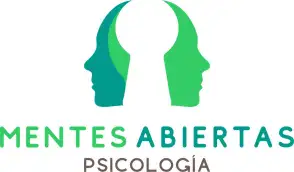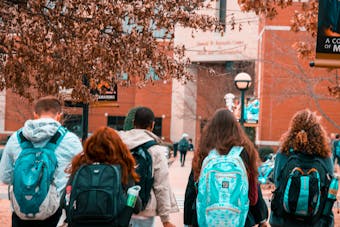Teacher-Student Relationships and Their Impact on Motivation and Self-Efficacy: A Pathway to Sustainable Learning
In the fields of psychology and education, considerable attention has focused on identifying the factors that promote students’ academic motivation and overall development. Research shows that the teacher-student relationship can be just as influential as the teaching methods or the curriculum itself. A recent study entitled “Teacher-student relationships as a pathway to sustainable learning: Psychological insights on motivation and self-efficacy” delves into how supportive, empathetic, and trust-based teacher-student relationships boost not only motivation but also students’ self-efficacy [oai_citation:0‡motivation-self-efficacy.pdf](file-service://file-7qowCtx4oA4gUGfnbNUM9g). These findings have important implications for designing educational interventions that are more human-centered and responsive to each student’s needs.
1. The Importance of Developmental Relationships in Education
The concept of developmental relationships refers to a model in which teachers go beyond merely transmitting content, instead acting as guides who support students holistically. This kind of relationship features:
According to the study, when teacher-student relationships are built upon these principles, learners display higher levels of engagement and motivation. Additionally, these supportive bonds often enhance responsibility and self-regulation, essential components of sustainable learning [oai_citation:1‡motivation-self-efficacy.pdf](file-service://file-7qowCtx4oA4gUGfnbNUM9g).
2. Academic Motivation: Internal and External Drivers
Academic motivation can be defined as the internal or external force prompting a student to engage with learning tasks, persevere through difficulties, and strive to reach their goals. Two primary types are often discussed:
- Intrinsic motivation: Arises when students find enjoyment and personal satisfaction in the learning process itself. This is enhanced when the subject matter aligns with their personal interests, curiosity, or developmental goals.
- Extrinsic motivation: Comes from external factors such as grades, rewards, social recognition, or family expectations. While it can be effective in the short term, it usually requires consistent reinforcement.
The study highlights that in practice, both forms of motivation coexist and can reinforce one another. A student with high intrinsic motivation who also sees future career opportunities in a particular course may be doubly motivated. Similarly, teachers who connect academic content to practical, real-life uses increase motivation by showing students the clear value of their current efforts [oai_citation:2‡motivation-self-efficacy.pdf](file-service://file-7qowCtx4oA4gUGfnbNUM9g).
3. Self-Efficacy and Its Influence on Academic Performance
Self-efficacy refers to an individual’s belief in their own capacity to successfully complete a specific task. Numerous studies in educational psychology note that self-efficacy influences how students tackle challenges, plan their study strategies, manage anxiety, and bounce back from setbacks. In particular:
Within the framework of developmental relationships, teachers can provide constructive feedback and encourage a growth mindset, which strengthens students’ self-efficacy. This is critical, because it not only enables better learning outcomes but also equips students with strategies to cope with complex situations, both academically and beyond [oai_citation:3‡motivation-self-efficacy.pdf](file-service://file-7qowCtx4oA4gUGfnbNUM9g).
4. Instructional Support: A Key Resource for Effective Teaching
Instructional support encompasses all actions a teacher takes to help students understand concepts and acquire essential skills. It includes the clarity of explanations, the organization of content, and the tailoring of strategies for different learning styles. Notable elements mentioned in the study include:
- Clarity and structure: Outlining lesson objectives or topic goals, presenting concrete examples, and assigning tasks with increasing complexity prevent confusion and give students a more structured view of the learning process.
- Formative feedback: Beyond simply correcting mistakes, teachers must suggest improvement strategies, highlight students’ achievements, and encourage reflection on their own performance.
- Active methodologies: Collaborative group work, problem-solving based on real scenarios, and classroom debates are a few approaches that bolster motivation. They also encourage participation and critical thinking.
When teachers take on the role of a mentor and facilitator—rather than a mere transmitter of information—student involvement and autonomy flourish. In this way, high-quality instructional support becomes a catalyst for motivation while reinforcing bonds of trust between teachers and students [oai_citation:4‡motivation-self-efficacy.pdf](file-service://file-7qowCtx4oA4gUGfnbNUM9g).
5. Connecting Instrumental Value to Sustained Motivation
Another key finding from the study is the significance of the instrumental value that students assign to a course. When they perceive that what they learn will be relevant to their professional or personal lives, their desire to move forward grows. This perception can be strengthened if teachers illustrate clear examples of how coursework is practically applied:
- Real-world projects: Analyzing practical case studies or local/global issues helps students internalize the practical benefits of what they study.
- Alumni experiences: Inviting former students to discuss how a particular subject proved useful in their professional paths provides current students with a clearer view of their own future potential and possible success stories.
- Medium- and long-term objectives: Setting concrete goals—like improving proficiency in a second language or applying specific techniques in a future project—encourages learners to plan ahead and invest consistently in their education.
From this perspective, although teacher-student relationships and instructional support can spark motivation, students’ understanding of the why and what for of their academic efforts amplifies and sustains that motivation [oai_citation:5‡motivation-self-efficacy.pdf](file-service://file-7qowCtx4oA4gUGfnbNUM9g).
6. Practical Implications for Educational Practice
Reflections and Future Directions
Evidence from this research highlights the strong interdependence between developmental relationships in the classroom, instructional support, motivation, and students’ self-efficacy. In a rapidly changing educational landscape, it is essential for institutions and teachers to reconsider their practices in order to position the student at the heart of the learning process. By nurturing an environment of trust and respect, while offering robust academic support, learning becomes more meaningful and long-lasting.
Moreover, this approach helps each individual develop a broader awareness of their own potential, fostering resilience that extends beyond the classroom. The combination of innovative teaching methods, emotional support, and concrete examples of a subject’s real-world benefits (instrumental value) equips students with competencies crucial for both academic and professional settings.
Looking ahead, the study suggests the following lines of inquiry:
- Longitudinal research: To examine how motivation and self-efficacy evolve over time as teacher-student relationships progress and solidify.
- Exploring cultural and contextual diversity: Investigating various cultures and educational settings—rural, urban, differing socioeconomic levels—to understand how these relationships are formed and how they function differently.
- Identifying additional facilitators: Technologies, gamification, and external mentorship initiatives could offer new angles on how motivation and student growth are shaped.
In conclusion, nurturing positive, strong teacher-student relationships emerges as a powerful catalyst for sustainable learning and emotional well-being. As this research suggests, coupling these supportive relationships with high-caliber instructional practices and demonstrating the practical relevance of coursework offers the strongest foundation for a learning environment that transcends academic theory and truly meets the aspirations and challenges of contemporary society.
Article based on the study “Teacher-student relationships as a pathway to sustainable learning: Psychological insights on motivation and self-efficacy” [oai_citation:6‡motivation-self-efficacy.pdf](file-service://file-7qowCtx4oA4gUGfnbNUM9g).


